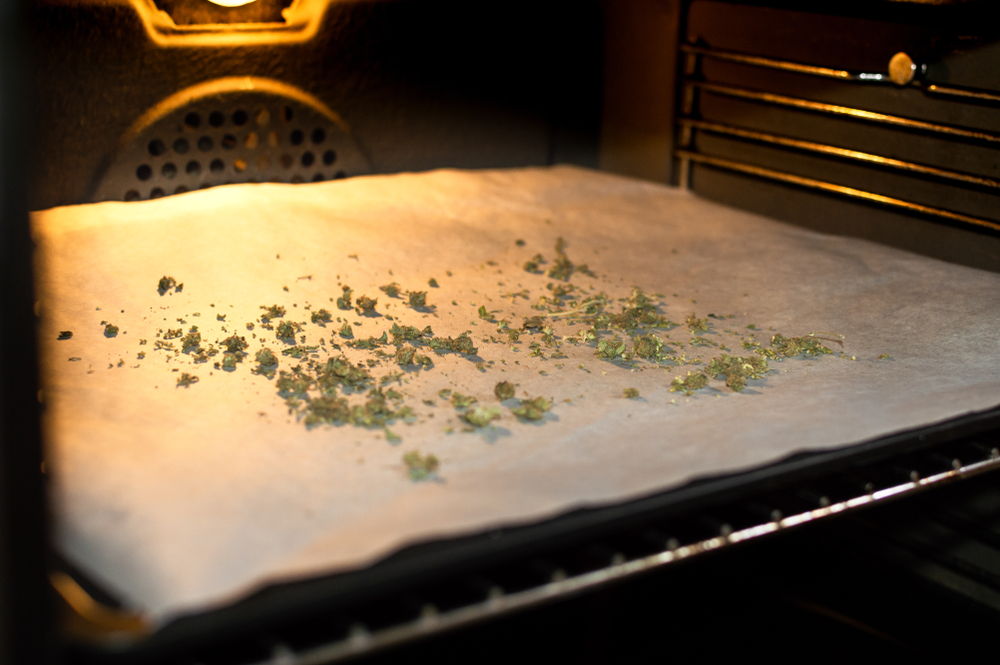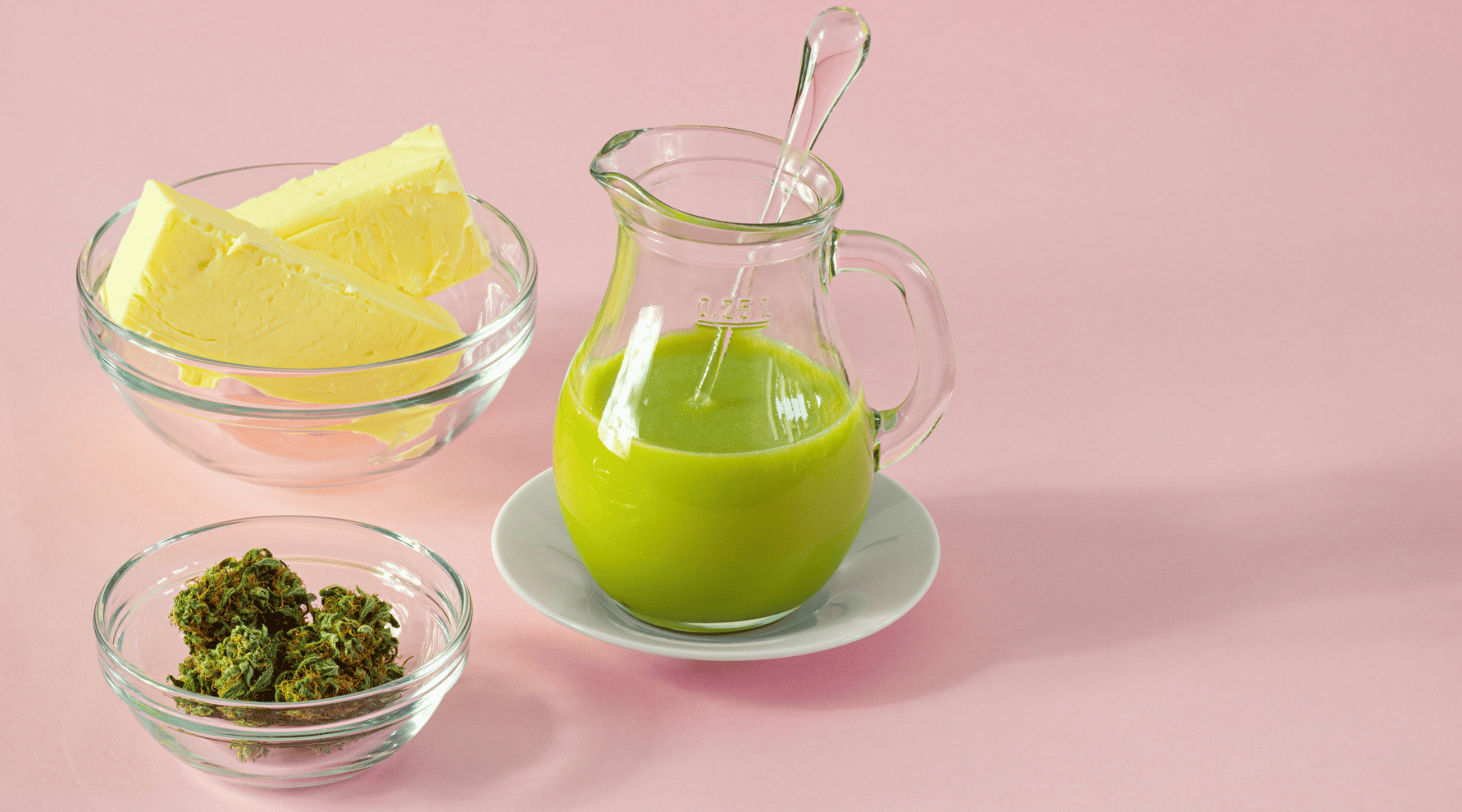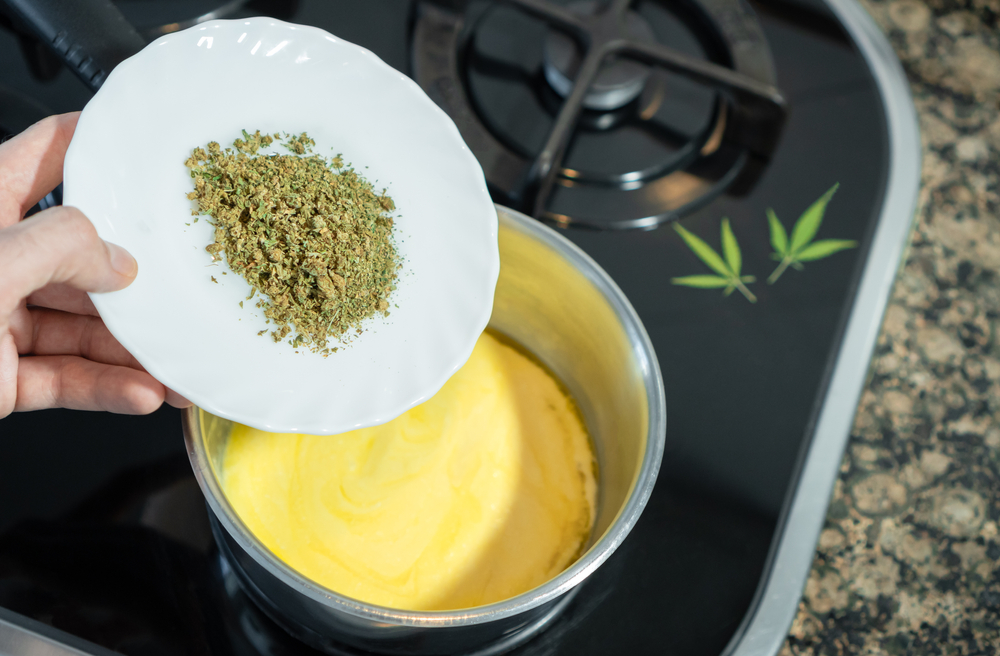

Unlock the Magic: Learn Why and How to Decarb Weed for Optimal Effects
Welcome, fellow cannabis enthusiasts, to a journey that will unlock the hidden magic within your beloved herb.
Have you ever wondered why, despite your best efforts, you haven't experienced the full potential of your weed's effects? Fear not, for we are here to reveal the secret behind enhancing those euphoric sensations and unleashing the true power of cannabis.
Brace yourselves as we embark on the complete guide to decarboxylating weed, a simple yet effective step-by-step process that will forever change the way you indulge in this magnificent cannabis plant. Get ready to delve into a world of optimal effects, where every puff will transport you to euphoria. Let's get started, shall we?

Discovering the Magic of Decarboxylation: Unveiling the Key to Unlocking the Full Potential of Cannabis
Decarboxylation, or "decarbing," is like a magical transformation for cannabis. It's a chemical reaction that sets free the power hidden within the cannabis flower. By removing a carboxyl group and releasing carbon dioxide (CO2), decarboxylation activates the compounds that work their wonders on your body.
In its raw form, cannabis strains hold Tetrahydrocannabinolic acid (THCA) and cannabidiolic acid (CBDA), the non-psychoactive cousins of Tetrahydrocannabinol (THC) and Cannabidiol (CBD). But when you apply heat through decarboxylation, these acids undergo a captivating metamorphosis, turning into the active forms we adore: THC and CBD.
This enchanting activation is what makes ground cannabis truly extraordinary, granting it both psychoactive and therapeutic effects. In other words, decarboxylation is the key that unlocks the full potential of cannabis. Prepare to be amazed!
Why is Decarboxylation Necessary?

Many people are unaware that the raw cannabis plant contains very little THC and CBD. According to a study published in Scientific Reports, most strains of decarb cannabis contain an average of 12% THCA and less than 1% THC. This means that without undergoing decarboxylation, the effects of consuming raw cannabis would be minimal.
But why is that? Well, our bodies cannot process THCA and CBDA in their raw form. They need to be activated by heat to become bioavailable, meaning they can interact with our endocannabinoid system and produce the desired effects. Without decarboxylation, we would not experience the high or therapeutic benefits of cannabis.
In short, decarboxylation is necessary to fully unleash the power of cannabis and make it a truly magical experience.
What's the deal with Decarbing weed? What's it used for?

Decarboxylation is primarily used for two purposes: to activate the psychoactive and therapeutic effects of cannabis, and to make it more versatile and convenient for consumption.
When decarbing weed, you are essentially transforming it from its raw form into a more potent and effective substance. This makes it ideal for those seeking the euphoric high or medicinal benefits of cannabis.
Decarbed weed opens up a whole new world of possibilities for consumption and application! It's commonly used to create cannabis-infused goodies like edibles, tinctures, and topicals. The decarbing process unleashes the active compounds, making them easily absorbed by the body. So, these products are super efficient and effective! In the culinary world, decarbed cannabis can be added to all sorts of recipes, from savory dishes to sweet treats, giving you a unique way to experience the therapeutic and psychoactive effects. Plus, if you're not into smoking or vaping, decarboxylated cannabis offers a customizable alternative that perfectly fits your individual needs and preferences.
How to Decarb Weed: A Step-by-Step Guide
Now that we understand the importance of decarboxylation, let's dive into how to do it. The process itself is relatively simple and can be done at home with just a few materials. Here's what you'll need:
A baking sheet
Parchment paper
Grinder (optional)
An oven
And of course, your favorite strain of cannabis
Pro-Tip: Choosing the Right Oven Setting
Before we begin our decarboxylation journey, it's essential to understand the role your oven plays in the process. The type of oven and its settings can significantly impact the end result. Specifically, if you have a convection oven with a fan feature, you'll need to tread a little more carefully. While convection ovens are generally great for evenly distributing heat, the fan feature can send your precious herb flying all over the oven, leading to a mess and wasted cannabis. To prevent this, make sure to turn off the fan feature before you start decarboxylating. Now, with that pro-tip in mind, let's dive into the step-by-step guide.
Here's your step-by-step guide to decarboxylating cannabis:
Preheat Your Oven: Start by preheating your oven to 220°F (105°C). It's important to set the right temperature because too high heat can destroy the cannabinoids and terpenes, which give cannabis its unique effects and flavor.
Prepare the Cannabis: While your oven is preheating, break up your cannabis buds into small pieces. You can use a grinder for a more even consistency, but this step can also be done by hand.
Line the Baking Sheet: Cover your baking sheet with a piece of parchment paper. This will prevent your cannabis from sticking to the pan.
Spread the Cannabis: Distribute the broken-up cannabis evenly over the sheet, ensuring the pieces aren't stacked on top of each other.
Bake the Cannabis: Place the baking tray in your preheated oven and let it bake for about 30-45 minutes. This should be enough time for the cannabis to decarboxylate. It's a good idea to lightly stir the cannabis every 10 minutes to ensure even heating.
Cool the Cannabis: After the baking time, remove the cannabis from the oven and let it cool down on the baking sheet. During this time, the cannabis should finish decarboxylating.
Store the Cannabis: Once your cannabis has cooled, it's ready to use! You can use it immediately, or store it in an airtight container for later use.
And there you have it! Your cannabis has now been decarboxylated and is ready to be used for cooking, making tinctures, or any other uses you desire. Remember to always start with a small amount to understand how potent your decarbed cannabis is before using more.
Steer Clear of These Common Mistakes When Decarbing Your Weed
Decarboxylation may seem like a simple process, but there are a few common mistakes that can prevent you from fully unlocking the magic of your cannabis. Here are a few things to avoid when decarbing.
Overheating
One of the most common mistakes when decarbing cannabis is overheating the material. When cannabis is heated at temperatures that are too high, it can cause the THC and other cannabinoids to be degraded and lost. This can lead to a decrease in potency and flavor. Additionally, overheating can also cause the plant material to become brittle and difficult to work with.
Not Stirring Regularly
Another mistake that is often made during decarboxylation is not stirring the material regularly. The heat needs to be evenly distributed throughout the cannabis in order for it to properly decarboxylate, so it’s important to stir the material every few minutes while it’s in the oven or on the stovetop. Failing to do this can lead to uneven results and a decrease in potency.
Not Measuring Temperature Accurately
Accurately measuring temperature is also essential for successful decarboxylation. If you don’t measure your oven or stovetop temperature accurately, you may end up either under- or over-heating your cannabis, leading to poor results. To ensure accurate measurements, invest in an oven thermometer or use an infrared thermometer for stovetop decarbing.
Not Decarbing Long Enough
Decarbing cannabis takes time—usually around 30 minutes—so it’s important not to rush through this process if you want consistent results. If you cut corners and don’t let your cannabis decarb long enough, you may end up with inconsistent results due to incomplete decarboxylation of some of the cannabinoids present in your material.
Not Allowing Cannabis To Cool Properly
Finally, once your cannabis has finished decarbing, it’s important not to rush through cooling it down as well. If it cools too quickly, some of the terpenes may evaporate off before they have had a chance to bind with other compounds in the plant matter, resulting in a decrease in flavor and aroma potential.
Are there any other ways to decarb weed? And which one is the best?
Absolutely! There are actually several alternative ways to decarboxylate cannabis apart from the traditional oven method. One option you could try is using a slow cooker, which allows for a longer, low-temperature infusion of the cannabinoids. Another approach is using a mason jar, where you seal the cannabis and heat it in a water bath for controlled decarboxylation. And if you're looking for even more precise temperature control, there are specialized cannabis decarboxylation devices available on the market..
Each method has its own advantages and considerations, so the best choice really depends on your specific needs. But I have to say, many cannabis enthusiasts tend to prefer the oven method because it's simple, accessible, and consistently gives great results. However, if you're willing to invest in a higher-cost option and want that extra precision, a specialized cannabis decarboxylation device might be worth considering.
Ultimately, it's all about finding the decarboxylation method that works best for you and your unique preferences. Feel free to experiment with different approaches and see which one gives you the desired results!
Five Clever Ways to Maximize Your Decarbed Herb
Now that you have successfully decarboxylated your cannabis, it's time to put it to good use! Here are five creative ways you can utilize your decarbed herb in different recipes and products:
Cannabis Butter
Cannabis butter, also known as cannabutter, is super popular for using decarbed weed. You can use cannabutter in all sorts of recipes, like baked goods, sauces, and dressings. To make it, just melt butter and mix it with decarbed weed, then strain it through a cheesecloth or sieve. You can keep the mixture in the fridge for two weeks or freeze it for up to six months. If you want a full recipe on how to make crockpot weed butter, we have assembled 5 special tips for you!
Cannabis-Infused Oils
Cannabis-infused oils are actually a great way to use decarbed weed. You can easily replace regular cooking oil with these oils when making meals like stir-fries, curries, and soups. So here's how you make them: just heat up some oil, mix it with decarbed weed, and then strain it through a cheesecloth or sieve. Once you're done, store the mixture in a cool, dark place for about two weeks or you can even freeze it for up to six months. Super convenient, right?
Tinctures
Cannabis tinctures are like super-concentrated liquid extracts that you can take under your tongue or add to your favorite foods and drinks. To make them, you just have to steep decarbed weed in alcohol for a few hours, strain it through a cheesecloth or sieve, and voila!?
Edibles
Cannabis edibles are food items that have been infused with cannabis extract or concentrate. Popular cannabis edibles include brownies, cookies, gummies, chocolates, and lollipops. To make cannabis edibles, you will need to infuse melted butter with decarbed weed before adding it into your recipe of choice. The finished product should then be stored in the refrigerator for up to two weeks or frozen for up to six months.
We have an amazing guide for you in case you want to know how to make weed gummies at home!
Topicals
Topicals are products that are applied directly onto the skin and absorbed through the pores rather than ingested like edibles or smoked like flower buds. Popular topicals include lotions, balms, salves, and bath bombs that contain cannabis extract or concentrate as an active ingredient. To make topicals at home using decarbed weed, you will need to infuse oil with your desired strain before mixing it into your recipe of choice
Conclusion
Decarboxylation is such a crucial step, you know? It's what unlocks the full potential of cannabis. So, if you follow this step-by-step guide and avoid those common mistakes, you can ensure that your decarboxylation process is successful and consistent. And let me tell you, once you've got your decarbed weed ready, the possibilities are endless! You can use it in so many different products and recipes, making cannabis a part of your daily routine. Get ready to experiment and have some fun with these clever ways to maximize your decarbed herb.
Now, it's time to put all that knowledge into practice and start creating your very own delicious cannabis-infused creations. Trust me, once you experience the benefits of properly decarboxylated weed, there's no going back! It's time to explore all the different ways you can use it in your daily life. With a little bit of knowledge and a whole lot of experimentation, you'll be well on your way to becoming a cannabis cooking pro!
Oh, and don't forget about proper storage. It's key to maintaining the potency and quality of your decarbed weed. Here are our top 5 super easy smell proof weed stash box ideas that you must check out!
And hey, always remember to label your products clearly, so there's no accidental consumption by others. Have fun and enjoy responsibly!
FAQ's
Q: What is decarboxylation and why is it important for cannabis consumption?
A: Decarboxylation is the process of heating cannabis to activate its compounds, such as THC. It is important because raw cannabis contains mostly non-psychoactive THCA, and decarboxylation converts it into psychoactive THC.
Q: How do you decarboxylate weed?
A: To decarboxylate weed, you can heat it in an oven at a specific temperature for a certain period of time. This process converts the THCA into THC, making it ready for consumption.
Q: What is the optimal temperature for decarboxylation?
A: The optimal temperature for decarboxylation is around 220-240°F (105-115°C). This temperature range ensures efficient conversion of THCA to THC without degrading the desired compounds.
Q: What is the difference between decarbing flower and concentrates?
A: Decarbing flower involves heating the whole cannabis buds, while decarbing concentrates refers to heating cannabis extracts. The process is similar, but concentrates may require less time due to their higher potency.
Q: What are the benefits of decarbing weed?
A: Decarbing weed enhances its psychoactive effects, making it more potent and bioavailable. It allows for a more predictable and enjoyable cannabis experience.
Q: How long does it take to decarb weed?
A: The decarboxylation process typically takes around 30-45 minutes, depending on various factors such as temperature, moisture content, and the starting material.
Q: What are the best methods for decarbing weed?
A: The most common methods for decarbing weed include using an oven, a sous vide machine, or a specialized decarboxylation device. Each method has its own advantages and considerations.
Q: How do you know if you have decarbed your weed correctly?
A: You can tell if you have decarbed your weed correctly by its color and aroma. Decarbed weed tends to have a golden-brown color and a distinct smell. Additionally, it should be more potent when consumed.











Leave a comment